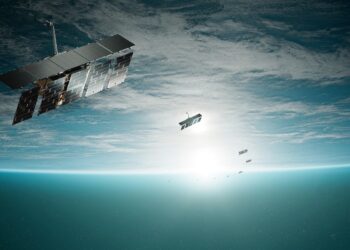WASHINGTON — An infrared sensor satellite that L3Harris designed for a future U.S. military constellation passed a preliminary review, positioning the company to compete in the Space Force program known as Medium Earth Orbit (MEO) Missile Warning and Tracking.
The Space Force plans to deploy a network of satellites in MEO to detect and track hypersonic missiles.
For the first deployment of satellites, known as Epoch 1, the Space Systems Command has already ordered six spacecraft from Millennium Space Systems. But the Space Force said as many as nine satellites could be procured for Epoch 1. In the next phase of the program, Epoch 2, it could buy as many as 18 additional satellites.
The Space Force is evaluating Raytheon’s design for Epoch 1, and L3Harris would become a third competitor.
Multi-orbit architecture
MEO is a new location for the military’s missile-detecting infrared sensor satellites. DoD is planning a multi-orbit architecture with satellites in low, medium, geostationary and highly elliptical orbits.
The Space Force’s Space Development Agency is building a network of missile-tracking sensors in low Earth orbit. MEO satellites will be at higher altitudes above 1,200 miles, providing a middle ground between LEO and geosynchronous orbits in terms of satellite lifetime, coverage area and time delays in signals.
Paul Wloszek, general manager for missile defense at L3Harris, said March 4 that the company’s proposed payload completed a preliminary design review, “and keeps the program on track for critical design review in 2024.”
The Space Systems Command announced it plans to release a draft request for bids for Epoch 2 satellites later this year and select suppliers in 2025.
Wloszek said the government is challenging the industry to develop far more sophisticated payloads for the Epoch 2 program. Whereas Epoch 1 satellites only have to track missiles in flight, Epoch 2 satellites have to perform…
Read the full article here


